
Midtown Madness is a 1999 racing game developed by Angel Studios and published by Microsoft for Microsoft Windows. The demo version was released in April 1999. Two sequels followed, with Midtown Madness 2 released in September 2000 and Midtown Madness 3 released in June 2003 for the Xbox. The game is set in Chicago; the object is for the player to win street races and obtain new cars.

NBA Live 2000 is the 2000 installment of the NBA Live video game series. The cover features Tim Duncan of the San Antonio Spurs. The game was developed by EA Sports and released in 1999. Don Poier is the play-by-play announcer with Reggie Theus on color commentary. The game features Michael Jordan in his first official appearance in the series. The PC version of the game introduced EA's "Face in the Game" feature, allowing players to use custom facial photographs on created players. It was also the final NBA Live game released for Nintendo 64. NBA Live 2000 is followed by NBA Live 2001. A cancelled Game Boy Color version was in development by Handheld Games for THQ, but it was scrapped during testing.

Need for Speed: High Stakes is a 1999 racing video game developed by EA Canada and EA Seattle and published by Electronic Arts for the PlayStation and Microsoft Windows. It is the fourth game in the Need for Speed series and a follow-up to Need for Speed III: Hot Pursuit. The game features more realistic elements than its predecessors and introduced a damage system that allows cars to take damage when colliding with objects, affecting their appearance and performance. It also introduced a series of economy-based tournaments, awarding players with a cash prize that can be spent on repairing, purchasing, or upgrading cars for subsequent races. The game's Hot Pursuit mode, which was introduced in Hot Pursuit, was expanded with more options, allowing players to control police pursuits attempting to stop racers.

Need for Speed: Porsche Unleashed, released as Need for Speed: Porsche 2000 in Europe and Need for Speed: Porsche in Latin America and Germany, is a racing video game released in 2000. It is the fifth installment in the Need for Speed series. Unlike other NFS titles, Porsche Unleashed centers on racing Porsche sports cars, with models ranging from 1950 to 2000.

Midtown Madness 2 is a 2000 open world racing video game for Microsoft Windows. It is the sequel to 1999's Midtown Madness, developed by Angel Studios and published by Microsoft. Unlike its predecessor, which is entirely set in Chicago, it features two open worlds in which to race, fictional representations of San Francisco, California and London, England. Players can choose from a variety of American and British vehicles including sports cars, buses and taxi cabs. The game has various modes of multiplayer connectivity, and included support for the now defunct MSN Gaming Zone. A sequel Midtown Madness 3 was released for Xbox in 2003.
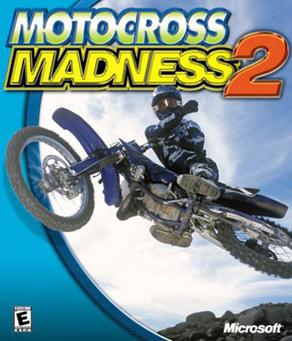
Motocross Madness 2 is a motocross racing video game that was developed by Rainbow Studios and published by Microsoft Games.

Sports Car GT is a 1999 racing sim game based on GT racing. It was published by Electronic Arts (EA) and developed by Image Space Incorporated for Microsoft Windows, and Point of View for PlayStation. Both editions of the game feature co-development by Westwood Studios. The PC version received "favorable" reviews, while the PlayStation version received "mixed" reviews.
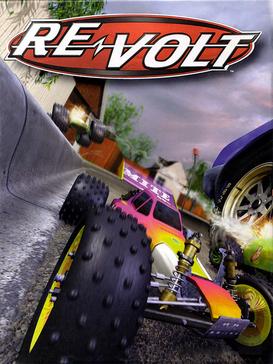
Re-Volt is a racing video game designed by Paul Phippen and Simon Harrison. It was developed by Acclaim Studios London and published by Acclaim Entertainment for Microsoft Windows, Nintendo 64, PlayStation and Dreamcast.

Motocross Madness is a motocross racing video game developed by Rainbow Studios and published by Microsoft.

Lego Racers is a Lego-themed racing video game developed by High Voltage Software and published by Lego Media in 1999.
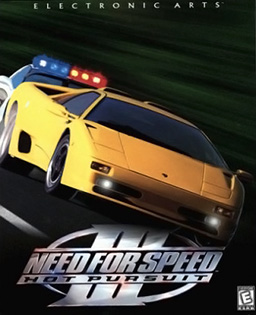
Need for Speed III: Hot Pursuit is a 1998 racing video game developed for PlayStation by EA Canada and Microsoft Windows by EA Seattle, and published by Electronic Arts. It is the third major installment in the Need for Speed franchise, incorporating police pursuits as a major part of gameplay. Hot Pursuit remains focused on racing using exotic sports cars, but features races that primarily take place in locations within North America, including varied settings and climates. Police AI is improved over the first game, utilizing several tactics to stop both the player and opponent. The PlayStation version was released on March 25, 1998, while the Windows version was released on October 12 the same year. The game received critical success, with praise for its graphics and customization options. It received a direct sequel in 2002 and a reboot in 2010.

NHL 2000 is an ice hockey video game developed by Electronic Arts Canada. It was released in 1999 and was the successor to NHL 99. The game did not boast great improvements to the game from NHL 99, nor did NHL 2001 feature any idea the two previous versions did not until NHL 2002.

Motorhead: High Velocity Entertainment is a racing video game developed by Digital Illusions CE AB for PlayStation and Microsoft Windows.

Test Drive 6 is a racing video game developed by Pitbull Syndicate for PlayStation, Microsoft Windows and Dreamcast. In the United States the game was published by Infogrames North America, while in Europe the game was published by Cryo Interactive. The game featured 37 licensed cars, plus four police car variants. As a first for the series, cars from General Motors are not playable in this game, instead they appear as traffic cars. The soundtrack featured industrial rock and techno music from artists such as Fear Factory, Lunatic Calm and Cirrus.

Redline Racer is a racing game that was developed by Criterion Games and published by Ubi Soft.

Superbike 2001 is a motorcycle racing video game developed by Milestone srl, published by Electronic Arts (EA), and released in 2000 for Microsoft Windows. It is part of EA's Superbike video game series.

Jeff Gordon XS Racing is a 1999 racing video game for Microsoft Windows and Game Boy Color. The game features then three time NASCAR Winston Cup Series champion Jeff Gordon. The game's Game Boy version has link cable support.
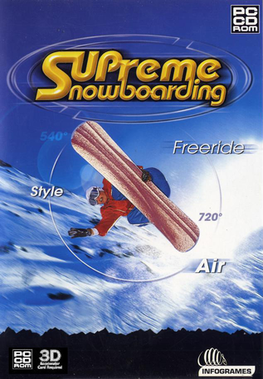
Supreme Snowboarding is a snowboarding video game created by Housemarque for Microsoft Windows with a Game Boy Color version by Software Creations in 1999. It was one of the first snowboarding games for Windows to take full advantage of 3D graphics cards that were becoming the norm in the late 1990s. Over 1.5 million units were sold worldwide, allowing Supreme Snowboarding to become the first hit title in Finnish game development. The game received positive critical reception, as well as acclaim for having one of the best visuals of its time, though its lack of content and replay value was sometimes criticized.
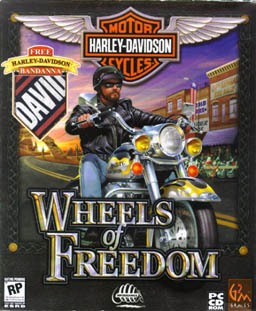
Harley-Davidson: Wheels of Freedom is a racing game developed by Canopy Games and G2M Games, and published by Infogrames in 2000.

Links LS 2000 is a golf video game developed by Access Software and published by Microsoft. It is part of the Links series and was released in 1999 for Microsoft Windows, and in 2000 for Macintosh. It was followed by Links 2001.






















